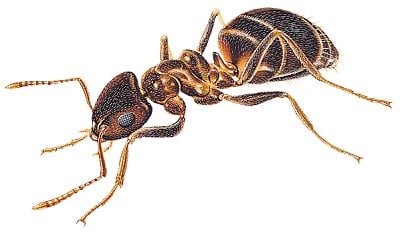Common or Black Ant

Appearance
- Workers 2-4 mm long.
- Queens up to 15mm long.
- Dark brown/black in colour.
Biology
- The queens lay a large number of eggs which hatch after 3-4 weeks, with the adults emerging around 5 weeks later.
- Between June-October the mature males and females leave the nest in order to mate. The ants have wings which is often why ‘flying ants’ are seen during this time of year.
- The males will die off after mating with the females hibernating (generally in soil, voids or under patios) over the winter.
Habitats
- Ant colonies are found in a wide range of locations including gardens, under patios and floors or in, and around buildings. Nest entrances and exits are often identified by small piles of fine soil or sand.
- Worker ants will often enter buildings in order to forage for food and once a source has been found a distinct trail of ants can be observed. Ants can be discouraged by cleaning up any sweet or protein based food sources.
Treatment
- Although domestic ants can be controlled in just one treatment using a variety of products, multiple visits may be required depending upon the level of infestation.
- As well as dispatching the ants visible to the naked eye; achieving long term control requires elimination of the colony source below ground or within a structural void.